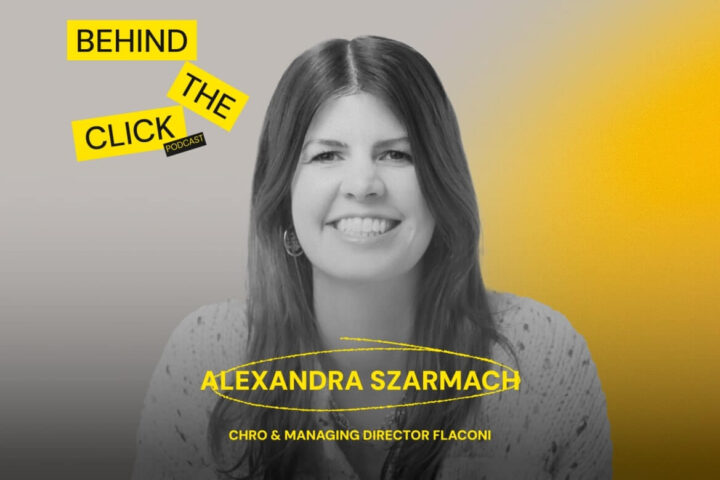Software projects are people & process projects – interview with Christian Borchert
Written by
Editorial TeamPublished on

What is the next change of architecture setup and how crucial is a performance-based approach?
Here comes the interview with Christian Borchert, Head of Consumer & App and moebel.de. Christian happily answered our questions and told us a word or two about his presentation for upcoming E-commerce Berlin Expo!
You’re a Head of Consumer & Apps at moebel.de. How big is your team and how your work looks on an everyday basis?
The team shall consist of 11 internal people, but currently we are a bit understaffed with dev resources, and 4 additional external resources – but they are completely integrated into the team.
The daily work varies a lot and shifts between strategic approaches and operational tasks, like defining tests, identifying and describing new features & functions. A lot of work is alignment with me product managers and the team and of course with other stakeholders from product development and other units like marketing. Additionally I am responsible to report team success, roadmap and status regularly to C & D Level.
Moebel.de is Germany’s biggest comparison and search portal for home and living. How often do you introduce changes in the interface?

We introduce changes only after we tested them. So if you count tests to this number than we introduce 2 – 3 changes every 2 weeks. These changes have of course a huge variety of how major or minor they are.
If we can prove that a test is successful we implement it for all customers. To measure success we always define a hypothesis and a range of KPI changes before we test. Of course not all tests are successful and so only a subset of changes is really implemented for all users.
How do you think customers’ preferences and requirements changed over the years and what are their expectations for websites and apps?
I think the expectation of customers is still the same and will be the same in the future – they want the holy grail of a wide assortment combined with the right recommendations to find the product the customer wants.
This expectation is combined with the requirement that the customer wants to know as much as possible about the product – beginning by key facts like height, length, material, etc., but he also wants to get a feeling for the product like how it feels. The only things that have changed and will change in the future are the technical possibilities to fulfill these requirements.
If you look into the past the first steps where high resolution images and details images of fabric and detailed descriptions. Then came 3D models, AR and furthermore and on top a lot of performance optimization. As you will always have a challenge in presentation online compared to the physical product you have to flank this with well-designed services.
What is performance-focused approach in your opinion? What does it mean in practice for frontend developers?
A performance based approach simply means that you don’t implement anything just because you can or because it is cool. You always have to measure two things.
1) what is the impact of the new function and
2) what it is the impact on website performance.
For example if you implement a feature that increases revenue for a specific user group by 20 % but decreases your performance by 10 % (server side and client side) it is most likely that this feature will be deleted. We can directly measure impact on KPIs if we increase or decrease rendering and time to active of our applications.
So we made this clear to everybody – stakeholder and developer, that performance is crucial and may overrule feature requests. Additionally we reserve optimization time per sprint.
Do you think that mobile-friendly interface is crucial in today’s world?
Definitely yes. It might be a philosophical discussion if you go for mobile first or mobile only, but you need to consider the mobile interface. If you do this always remember your customers might use other devices than you in terms of screen size or hardware. So it is not only a UI & UX topic but a software engineering topic as well.
What are the key takeaways from your presentation?
The key takeaway of the presentation is that software projects are people & process projects, too. If you don’t consider your project approach comprehensively you are most likely to fail.
Can you elaborate your statement that „next to architecture change a mindset change is also necessary”?
It’s quite easy to elaborate it. Imagine you built an application based on an architecture regardless of what kind. Now you are forced to change the architecture.
It is likely that you have to change your way of working as well. It may because the new setup is focused on more responsibilities for more people, or because you have the opportunity to decide things directly or just because the working process change.
Imagine you try to work the same way as you did before – it will fail. You have to encourage the people to take responsibility, to fail and learn and to take responsibility. And I am sure the next change in the architecture setup will have the need of change management, too.
Do you think that users’ preferences when it comes to UX and UI differ depending on the part of the world they come from?
Yes, I totally agree on this statement. Just compare successful European, North or South American and Asian websites or portals. The way the guide the user, the way of interface design and communication is totally different. In smaller scale you can see this in Europe as well. But that does not always mean that you have to reflect it directly from the beginning. It is a valid approach to get to market quickly to follow the master version and when you see that your local version increases its revenues and other relevant KPIs you can justify the split from the guiding master.
Can you identify frontend trends for 2019?
We will see an increase of different usages concepts and decrease of traditional web/mobile access – e.g. voice activated commands. VR as technology will increase its relevance at the POS.
I think for AR we will have to wait a bit longer as AR is highly relevant for end users but currently we are lacking sexy devices for the end user.
In general we will see a lot more MVP approaches, because time to market is getting more and more crucial to be competitive.
How do you think user interfaces will change over the next 10 years? What are your predictions?
Personally I think that user interfaces and customer usage will merge between display, AR, VR and Voice. We will see more specialized interfaces for more uses cases and a frictionless change between interfaces.
Christian is one of the speakers during E-commerce Berlin Expo 2019. If you want to see his presentation live, register here for free.


Christian Borchert
Head of Consumer & Apps moebel.de
Head of Consumer & Apps at moebel.de – Moebel.de is Germany’s biggest comparison and search portal for home & living – Christian is responsible for product development of the frontend portal and mobile apps and all customer facing interfaces – Leads strategic and operational product development for Germany & international portals


